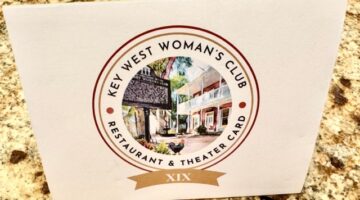GOLDEN GLOBE OUTLINE: RULES, ROUTE, AND RIDE
By Davin Rose
Konk Life Staff Writer
With the start of the around the world Golden Globe Sailboat Race closing in on us, now is a perfect time to take a closer look at the components that give the race its structure, namely the Rules, Route, and Ride or the type of vessels allowed.
RULES-To even qualify to compete in this race each captain has to have a measurable amount of salt in their blood. In order to the get that, they have to have previously sailed a minimum of 8,000 miles in any vessel with an additional 2,000 miles solo, and another additional 2,000 miles in the vessel they intend to race. 12,000 water miles is a good start as the race itself is well over 30,000 miles non-stop.
The overall general rules are fairly simple and create a new genre in the world of sailboat racing coined Retro Sailing. To preserve the artistry of the original race established in 1968, no sailing equipment post dating that period can be used. Since the modern world is all about our modern toys, this eliminates practically everything from the modern day sailors arsenal. Talk about a return to fundamentals. No GPS, chart plotters, electronic wind vanes or knot meters, depth sounders, radar, iPhones, water makers, digital cameras, or anything that post dates the original race in 1968. Sailors will be using celestial navigation with a sextant and paper charts.
ROUTE-The race is an eastbound circumnavigation that starts and finishes in les Sables d’Olonne, France. Sailing south down the Atlantic there are a few marks that must be adhered to in order to maintain course, the first one being an inshore Canary Island mark to starboard. Anyone willing can travel out to interview the captains as they pass by, without stopping, and captains are allows to hand over film from pictures and letters but are NOT allowed to receive anything. Next marks are Trindade to port, Cape Town film drop, Cape of Good Hope to port, Prince Edward Island followed by the Crozet Islands and Kergulen all to starboard. 45 degree south latitude to starboard is an imaginary line the captains must not cross or face a time penalty. Next marks are Cape Leeuwin to port to a gate in Storm Bay Tasmania where entrants drops sail and can either drift or anchor for 90 minutes for interviews with media, family, friends, but again nothing can be loaded onto the boats. Continuing from here the Snares Islands and Bounty Islands to starboard, to a waypoint 46 degrees south, 174 degrees west to starboard then on to Cape Horn to port, Punta del Este film drop and the final run up the Atlantic to the finish line. Quite the loop rounding all 5 major horns this planet has to offer!
RIDE-Vessels are to be between the length of 32’-36’ not including bowsprits, have a minimum displacement of 6,200 kg, a full keel with rear attached rudder, be made of fiber reinforced plastic construction, and predate design 1988.
Key West local publisher and radio host Guy d’Boer has successfully completed his warm up stretch with a transatlantic voyage departing from Savanah, GA and making landfall in A Coruna Spain Thursday July 28th. Guy has been sailing his boat Spirit to the start line in les Sables d’Olonne, France in preparation for and positioning to begin the GGR 2022 on September 4th. Currently 1 of 18 participating captains, this race promises to be one of epic proportions.
[livemarket market_name="KONK Life LiveMarket" limit=3 category=“” show_signup=0 show_more=0]

No Comment